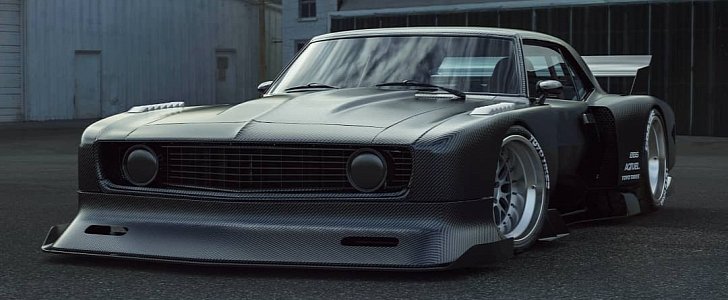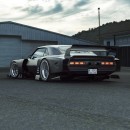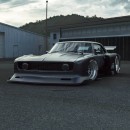The mid and late 1960s might've been an amazing era for GM muscle cars roaming the streets, but we can't say the same about racecars coming from General Motors, given the racing ban the company introduced back in 1963, which wouldn't be properly relaxed until 1970. As such, the rendering sitting before us now comes to gift a 1969 Camaro with the motorsport wings it never got from the factory.
Sure, the road-going Camaro could go fast in a straight line. But what about handling and deceleration? Well, the first step toward improving those areas, which will also help with acceleration, is losing weight. And this Chevy achieves that by using an all-carbon construction.
And there's nothing that helps improve cornering speed quite like downforce, which explains all the airflow manipulation hardware on this machine. In its aim to trick the stopwatch, the newfound aero basically reshapes the car, showing us a new face of what was the final year of the first-generation Camaro.
Besides, there's a method to the madness: Karan Adivi, the digital artist behind the work, envisions this as a Group 5 racecar - back in 1966, the FIA introduced the Group 5 Special Touring Cars class, with this offering a more liberal modding approach compared to the Group 1 and Group 2 categories running at the time. For the record, these rules were embraced by the British Saloon Car Championship from 1966 and the European Touring Car Championship from 1968.
Thus, the automaker decided to show some efforts towards stopping the growth by renouncing its motorsport activities, a move that also saved the company's budget. However, while financial support was withdrawn, privateers found a bit of understanding when it came to tech support and receiving go-faster parts, but this is another story for another time.
PS: If this rendering floats your boat makes it stick to the road, you might want to check out a similar tale built around a 1970 Chevrolet Chevelle SS.
And there's nothing that helps improve cornering speed quite like downforce, which explains all the airflow manipulation hardware on this machine. In its aim to trick the stopwatch, the newfound aero basically reshapes the car, showing us a new face of what was the final year of the first-generation Camaro.
Besides, there's a method to the madness: Karan Adivi, the digital artist behind the work, envisions this as a Group 5 racecar - back in 1966, the FIA introduced the Group 5 Special Touring Cars class, with this offering a more liberal modding approach compared to the Group 1 and Group 2 categories running at the time. For the record, these rules were embraced by the British Saloon Car Championship from 1966 and the European Touring Car Championship from 1968.
Why did GM tell its brands they had to withdraw from racing during the said era?
By 1961 and 1962, GM was enjoying around 53 percent of the entire U.S. auto market, with the US authorities considering breaking up the company if the 60 percent threshold would've been reached.Thus, the automaker decided to show some efforts towards stopping the growth by renouncing its motorsport activities, a move that also saved the company's budget. However, while financial support was withdrawn, privateers found a bit of understanding when it came to tech support and receiving go-faster parts, but this is another story for another time.
PS: If this rendering floats your boat makes it stick to the road, you might want to check out a similar tale built around a 1970 Chevrolet Chevelle SS.






